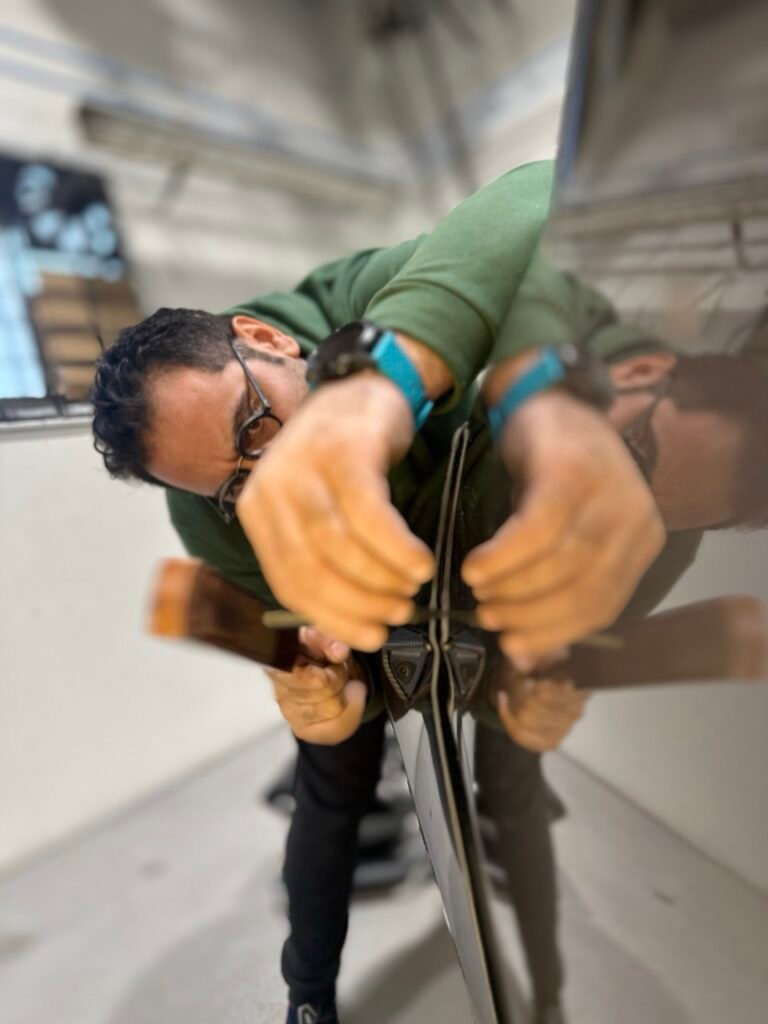Paint Protection Film (PPF), also known as clear bra, is a transparent polyurethane film applied to the exterior surfaces of vehicles to protect them from damage caused by road debris, stone chips, bug splatter, scratches, and other hazards. It is a durable, self-healing material that provides an additional layer of defense for a vehicle’s paintwork.


What is Paint Protection Film?
Paint Protection Film (PPF), also known as clear bra or stone guard, is a transparent and durable film applied to the exterior painted surfaces of vehicles to protect them from damage. It is typically made from a thermoplastic urethane material that is resistant to scratches, chips, and other minor abrasions.
PPF works as a sacrificial layer, absorbing the impact of road debris, stones, insects, and other environmental elements that can harm the vehicle’s paint. By absorbing the damage, the film helps preserve the original appearance of the paint and maintains the resale value of the vehicle.
Paint protection film is optically clear, meaning it does not distort the color or clarity of the underlying paint. It is also designed to be self-healing to some extent, with minor scratches and swirl marks disappearing over time when exposed to heat or sunlight.
Installation of PPF typically involves meticulously fitting the film to the contours of the vehicle’s body panels. Professional installation ensures a seamless appearance and maximum protection coverage.
Overall, paint protection film provides an effective solution for maintaining the aesthetic appeal and value of a vehicle’s paint finish, offering peace of mind to owners who want to keep their vehicles looking pristine for longer periods.
Here are some key aspects of Paint Protection Film:
1-Types of Coverage:
PPF can be applied to various areas of a vehicle, including the hood, fenders, bumper, side mirrors, door edges, and other vulnerable areas prone to damage. Full-body coverage is also available for comprehensive protection.
2-Appearance Options:
PPF comes in different finishes, including glossy and matte. Glossy PPF enhances the shine of the vehicle’s paint, while matte PPF provides a non-reflective, satin-like appearance. Both options offer protection without altering the vehicle’s original appearance significantly.
3-Customization:
Professional installers can customize PPF to fit the contours and specific features of each vehicle model, ensuring seamless coverage and a tailored look. Custom patterns are often created using computer-aided design (CAD) software for precision and accuracy.
4-UV Resistance:
High-quality PPFs are designed to resist yellowing and fading caused by prolonged exposure to ultraviolet (UV) radiation. This helps maintain the clarity and transparency of the film over time, ensuring long-lasting protection and visual appeal.
5-Warranty:
Many manufacturers of premium PPFs offer warranties against defects, yellowing, cracking, and other issues for a specified period, providing peace of mind to vehicle owners.
6-Professional Installation:
While DIY kits for PPF application are available, professional installation is recommended for optimal results. Experienced installers have the skills, tools, and knowledge to ensure proper adhesion, alignment, and finish quality.
7-Cost:
The cost of Paint Protection Film installation varies depending on factors such as the size of the vehicle, the areas covered, the type of film chosen, and the installer’s expertise. While PPF installation may represent an initial investment, many vehicle owners consider it a worthwhile investment for long-term paint protection and preservation.
8-Preventative Maintenance:
In addition to protecting against external hazards, PPF can help prevent damage from environmental contaminants, such as bird droppings, tree sap, and pollutants, which can etch or stain the vehicle’s paint if left untreated.
9-Material:
PPF is typically made from multiple layers of thermoplastic urethane film. These layers provide strength, flexibility, and optical clarity while offering protection against various elements.
10-Installation:
PPF installation involves carefully applying the film to the vehicle’s painted surfaces. Professional installers use precision cutting techniques to ensure a perfect fit, minimizing the appearance of seams and edges. The film is then heat-formed and bonded to the paint using pressure-sensitive adhesives.
11-Protection:
Once applied, PPF creates a protective barrier that shields the underlying paint from chips, scratches, and other damage. It absorbs the impact of debris and distributes it across the surface of the film, preventing it from reaching the paint.
12-Self-Healing Properties:
Some high-quality PPFs feature self-healing properties, meaning that minor scratches and swirl marks on the surface of the film can disappear over time when exposed to heat, such as sunlight or warm water.
13-Maintenance:
Paint Protection Film requires minimal maintenance. It can be washed and waxed like regular paint, and its clear appearance allows the vehicle’s finish to shine through without altering its color or texture.
14-Durability:
PPF is designed to withstand harsh environmental conditions, including UV radiation, extreme temperatures, and moisture. It helps preserve the appearance of the vehicle’s paint for years, extending its lifespan and resale value.
15-Removability:
While PPF is intended to be a semi-permanent solution, it can be removed without damaging the underlying paint if desired. Professional removal techniques ensure a clean and residue-free surface.
Overall, Paint Protection Film is a versatile and effective solution for safeguarding a vehicle’s paint from a wide range of potential damage, offering durability, customization options, and peace of mind to vehicle owners seeking to maintain their vehicles’ appearance and value.